What makes for a great black and white image?
Alex Mustard
Black and white is often used by underwater photographers to save images that have been shot from too far away. Problem pictures that are too blue and too low in contrast. Monochrome cuts through the blue and allows us to massively boost contrast - saving the troubled shots. However, while this improves a failed image and makes it presentable, it rarely produces a stunning black and white image. I strongly believe that many of the best black and white underwater images are planned as black and whites, or at least as monochromatic silhouettes. I know mine are.
Fine detail usually doesn’t work well in black and white. Instead we want the composition bossed by large, visually appealing shapes. I usually shoot my black and white images against or across the light with maximizes shadows, or when in shallow water when the light is flat (cloudy weather). I set the picture control of my Nikon to Monochrome, and add additional contrast (and sometimes the in camera orange filter if I am after a dark background), so that the files on the back of my camera come up in black and white, with a look close to how the finished file will appear (although the RAW files remain in color).
On my workshops I usually challenge the group to shoot a lot of black and white images because not only does it produce interesting images in itself, it also teaches underwater photographers to pay close attention to ambient light and use it in different ways for different effects (such as for a color shot and a black and white shot of the same subject). And this is of great benefit for being able to control the atmosphere of the backgrounds in normal color, strobe lit wide angle photography.
Finally, when it comes to processing one the common mistakes is end up with a background tone that is replicated in the subject and as a result the subject gets lost in the background. Instead use the channel mixer to either lighten or darken the background relative to the subject (using the blue slider). Dark and light backgrounds both look great, the key is to avoid a tone that the subject doesn’t stand out from.
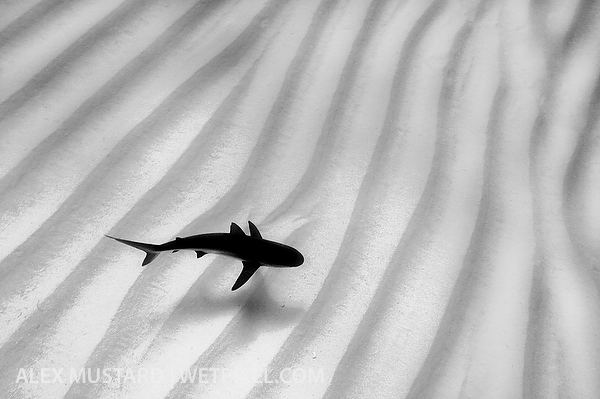
Flat light allows the patterns of the ripples to shine through. Had the sun been out, the light patterns on the seabed would dominate the image and the simple composition would be lost. Taken with Nikon D2x and Nikon 12-24mm. Subal housing, no strobes.
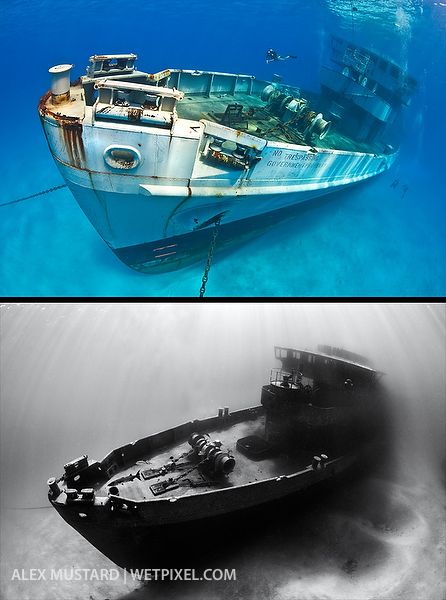
Black and white and color shots of the same subject (in this case the bow of the Kittiwake) usually require different use of light to produce the best results. The color image is shot with the light, with the sun in the classic “over my shoulder” position in order to illuminate all the color and detail of the wreck (taken with a Magic Filter). The black and white image is of the same scene, but photographed across the light, with the sun behind the wreck, to reveal the shapes and form of the wreck in shadow and highlight. In order to get these different lighting conditions I had to dive on the wreck at different times of the day to have the light exactly where I wanted it.
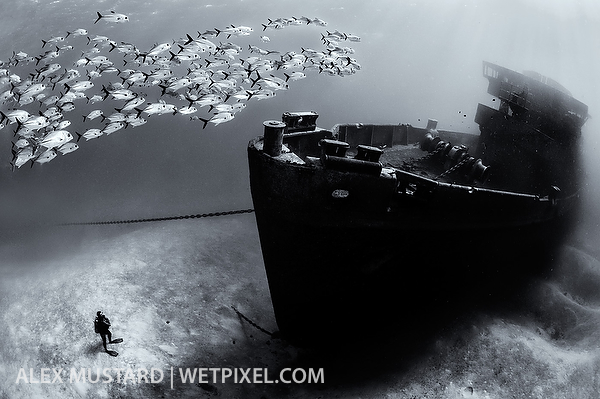
This image employs the same use of the light, just with more activity going on. Taken with Nikon D4 and Nikon 16mm fisheye. Subal ND4 housing, Seacam strobes.
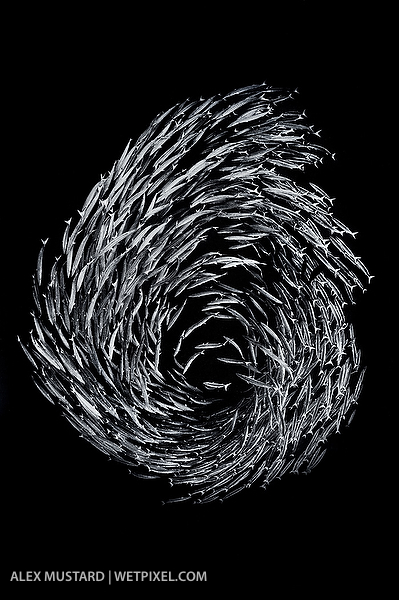
This school is effective in black and white because of the contrast between the light fish and dark water. Schools also look great in monochrome when you drop below them and shoot them as silhouettes, in that case with dark fish against a light background. The key is the contrast between the subject (fish) and the background. Taken with Nikon D4 and Nikon 16mm lens. Subal housing. Seacam strobes.
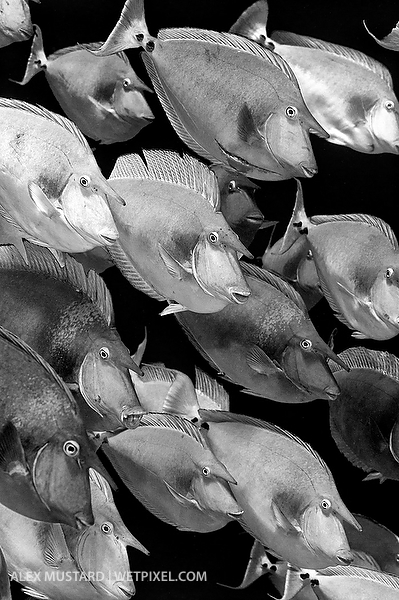
Another fish school works in mono for similar reasons, despite being a simple image. Taken with Nikon D700 and Nikon 105mm lens. Subal housing, Subtronic strobes.
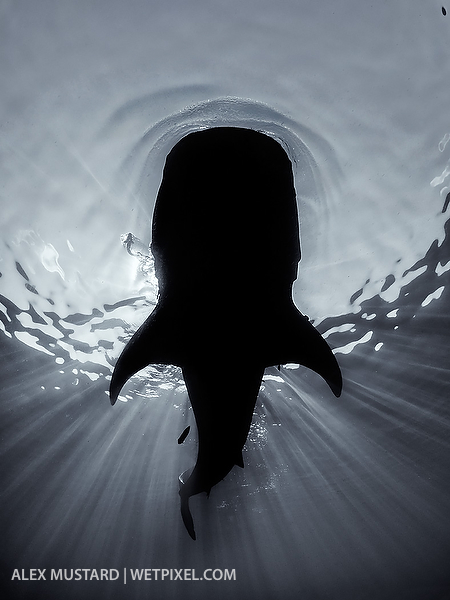
I actually prefer this whaleshark shot in color. But since it was shot as a monochrome silhouette, it does work as a black and white and was awarded in the Wildlife Photographer of the Year contest. Taken with Olympus OM-D EM-5 and Panasonic 8mm fisheye. Nauticam housing. No flash.
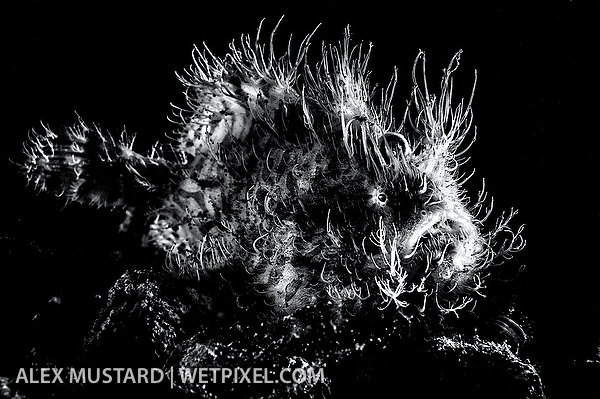
Macro subjects don’t usually suit black and white as the images are usually taken to emphasize detail and color. This photo works in black and white for me because it is shot against the light (in this case backlighting from a strobe) with strong shadows. Taken with Nikon D4 and Nikon 60mm lens. Subal housing. Inon strobes.
This black and white effect was done in camera:
To view more of Alex’s work, please visit his website.
Page 1: Aaron Wong, Daniel Botelho, Stephen Frink, Tony Wu.
Page 2: Alex Mustard.
Page 3: Abi Mullens, David Barrio, Martin Edge, Ellen Cuylaerts, Kurt Amsler, Jason Bradley.
Page 4: Douglas Seifert.
Page 5: Jean Bruneau, Amanda Cotton, Christian Vizl, Brian Skerry, Mike Veitch.